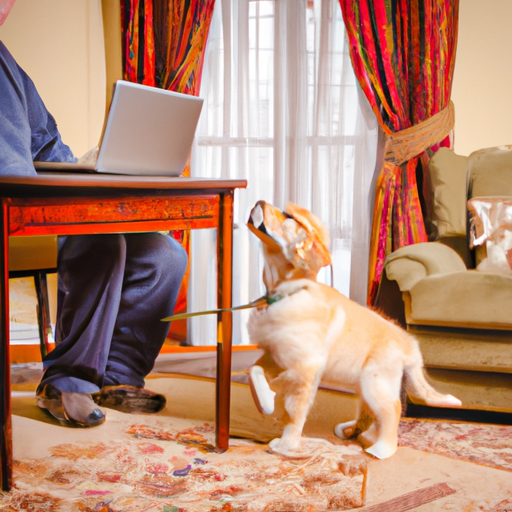Introduction
As a caregiver, you’ll find that one of the challenges you’ll face when raising a puppy is managing their barking. Barking is a natural behavior for dogs – it’s their primary method of communication. However, excessive barking can be disruptive and problematic. Here, we’ll guide you through the process of training your puppy not to bark excessively.
Understand Why Your Puppy is Barking
Firstly, understand why your puppy is barking. Dogs bark for various reasons:
- Warning or alert
- Playfulness or excitement
- Anxiety
- Boredom
- Response to other dogs
Pay attention to when and why your puppy is barking. Keeping a ‘bark diary’ can help you identify patterns and triggers.
Training Basics
Next, let’s cover some basic principles of dog training:
- Positive reinforcement: Reward your puppy when they behave correctly. This could be with treats, praise, or toys.
- Consistency: Always use the same command and reward for a particular behavior.
- Patience: Training takes time. Don’t expect instant results.
Training Methods
There are several methods you can use to train your puppy not to bark. Here are three effective ones:
1. The ‘Quiet’ Command
This involves teaching your puppy a command that means ‘stop barking’.
- When your puppy starts barking, say ‘Quiet’ in a calm, firm voice.
- If they stop barking, reward them with a treat or praise.
2. Distract and Redirect
This method involves distracting your puppy when they start to bark and then redirecting their attention to something else.
- When your puppy starts barking, distract them with a loud noise or a toy.
- Once they’re quiet, redirect their attention to a positive activity, like a game or a training session.
3. Ignore the Barking
This method is based on the idea that your puppy is barking for attention.
- When your puppy starts barking, ignore them. Don’t look at them, talk to them, or touch them.
- Once they’re quiet, give them attention and praise.
Tools to Aid Training
There are several tools you can use to aid in your training:
- Treats: Ideal for positive reinforcement.
- Toys: Can be used for distraction and redirection.
- Clicker: A tool used to signal to your dog that they’ve done something right.
| Tool | Use |
|---|---|
| Treats | Positive reinforcement |
| Toys | Distraction and redirection |
| Clicker | Signals correct behavior |
Professional Help
If you’re struggling to train your puppy not to bark, consider seeking professional help. A professional dog trainer or a behaviorist can provide guidance and support.
Common Mistakes to Avoid
Avoid these common mistakes when training your puppy not to bark:
- Inconsistency: Always use the same command and reward for a particular behavior.
- Negative reinforcement: Never yell at your puppy or punish them for barking. This can cause fear and anxiety, which can lead to more barking.
- Ignoring underlying issues: If your puppy is barking due to anxiety or a medical issue, addressing the root cause is important.
Frequently Asked Questions
How long does it take to train a puppy not to bark?
Training duration depends on your puppy’s personality, the reason for their barking, and your consistency in training. It could take weeks to months.
Is it bad to use a bark collar on a puppy?
Bark collars can cause fear and anxiety and can be harmful to puppies. It’s better to use positive training methods.
Is it normal for a puppy to bark a lot?
Yes, barking is a normal form of communication for dogs. However, constant barking can be a sign of a problem, such as anxiety or boredom.
Remember, patience and consistency are key. Happy training!



